
Hypena is a genus of moths in the family Erebidae. It was first described by Franz von Paula Schrank in 1802. These non-migratory moths overwinter as pupae and almost never come to bait as adults.

Hypena baltimoralis, the Baltimore bomolocha or Baltimore hypena, is a moth of the family Erebidae. The species was first described by Achille Guenée in 1854. It is found in the eastern part of the United States, west and south to Wisconsin, Missouri and Florida and Texas.
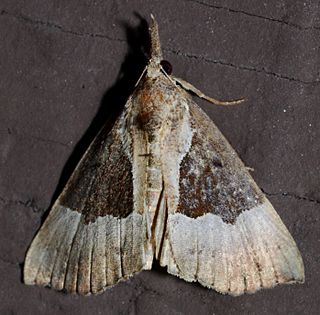
Hypena bijugalis, the dimorphic bomolocha, dimorphic hypena or toothed snout-moth, is a moth of the family Erebidae. The species was first described by Francis Walker in 1859. It is found in North America from Nova Scotia across southern Canada to Vancouver Island, south over the whole United States to Florida.
Hypena edictalis, the large bomolocha, is a moth of the family Erebidae. The species was first described by Francis Walker in 1859. It is found in North America from Quebec and Maine south to Virginia and Kentucky, west to the foothills of Alberta and the Peace River area of British Columbia.
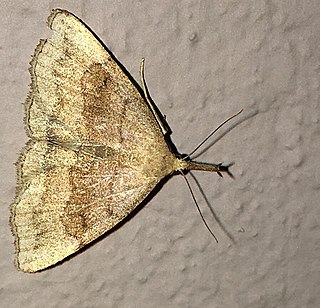
Phalaenostola metonalis, the pale phalaenostola, tufted snout or pale epidelta, is a moth of the family Erebidae. The species was first described by Francis Walker in 1859. It is found in North America from British Columbia to Newfoundland, south to North Carolina, west to Missouri.
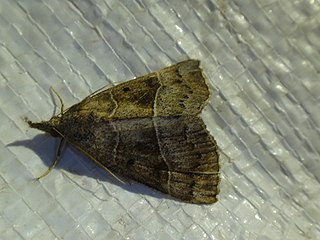
Hypena deceptalis, the deceptive hypena or deceptive bomolocha moth, is a moth of the family Erebidae. The species was first described by Francis Walker in 1859. It is found in North America from Manitoba to Quebec, south to Florida and Texas. It is absent from much of Gulf Coastal Plain though.
Hypena manalis, the flowing-line hypena, is a moth of the family Erebidae. It is found from Minnesota to Nova Scotia, south to Florida and Texas.

Hypena abalienalis, the white-lined hypena or white-lined bomolocha moth, is a moth of the family Erebidae. The species was first described by Francis Walker in 1859. It is found from southern Canada to northern Florida and Texas.
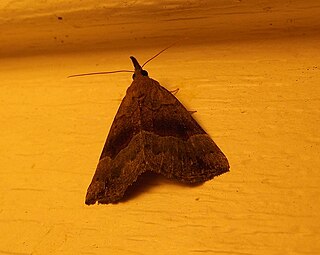
Hypena madefactalis, the gray-edged hypena or gray-eyed bomolocha, is a moth of the family Erebidae. The species was first described by Achille Guenée in 1854. It is found from extreme southern Canada (Quebec) to Georgia and Texas.
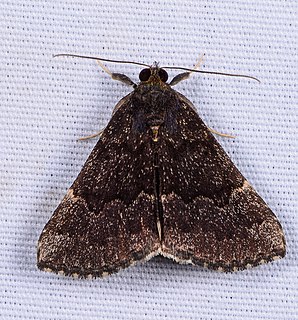
Hypena sordidula, the sordid hypena or sordid bomolocha moth, is a moth of the family Erebidae. The species was first described by Augustus Radcliffe Grote in 1872. It is found in North America from Quebec and Maine south to northern Florida and Texas, west to Louisiana and Kansas, north to Manitoba.
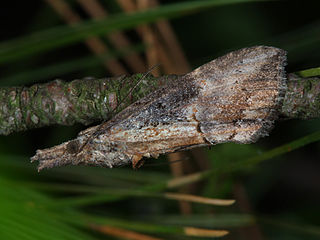
Hypena scabra, the green cloverworm or black snout, is a moth of the family Erebidae. The species was first described by Johan Christian Fabricius in 1798. It is found in North America from Canada south to Florida and Texas. It has also been reported from Great Britain.
Hypena eductalis, the red-footed bomolocha moth or alder smoke, is a moth of the family Noctuidae. The species was first described by Francis Walker in 1859. It is found in North America from Saskatchewan to Nova Scotia south to Florida and Texas.
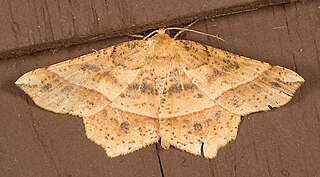
Euchlaena tigrinaria, the mottled euchlaena, is a moth of the family Geometridae. The species was first described by Achille Guenée in 1857. It is found from New Brunswick to Virginia, west to Texas, Utah and Oregon, north to British Columbia.

Amblyptilia pica, the geranium plume moth, is a moth of the family Pterophoridae. The species was first described by Baron Walsingham in 1880. It is found in western North America from Alaska to California, inland to Alberta and Kansas. It is also found in the north-eastern United States and Ontario.
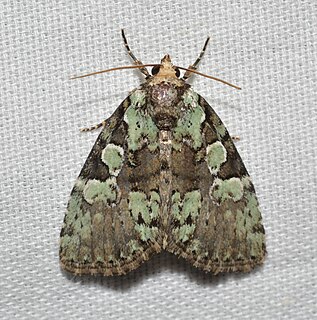
Leuconycta lepidula, the marbled-green leuconycta moth, marbled-green jaspidia or dark leuconycta, is a moth of the family Noctuidae. The species was first described by Augustus Radcliffe Grote in 1874. It is found in North America from Nova Scotia to North Carolina, west to Texas and north to Alberta.
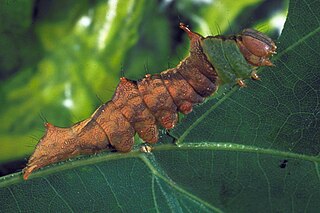
Schizura unicornis, the unicorn caterpillar moth, unicorn prominent or variegated prominent, is a moth of the family Notodontidae. The species was first described by James Edward Smith in 1797. It is found in all of North America, except the arctic north.

Hypena obacerralis is a moth of the family Erebidae. It is found throughout Africa, the Middle East and South Asia and Malaysia.

Hypena conscitalis is a moth of the family Erebidae first described by Francis Walker in 1866. It is found throughout Africa, from Senegal to South Africa, in South and South-East Asia as well as in Australia and on some Pacific and Indian Ocean islands.

Hypena californica, known generally as the California cloverworm moth or western bomolocha, is a species of moth in the family Erebidae. It is found in North America, where it ranges along the Pacific Coast from Alaska to southern California. The habitat consists of moist forests and riparian areas.
Hypena umbralis, the banded bomolocha moth, is a species of moth in the family Erebidae.
















